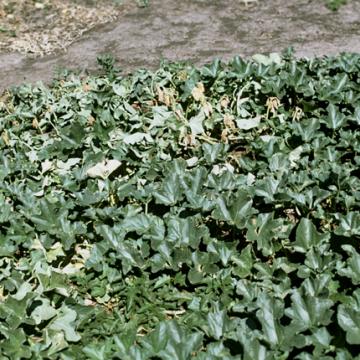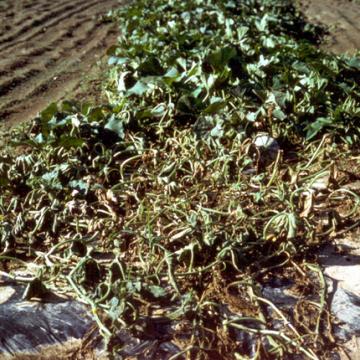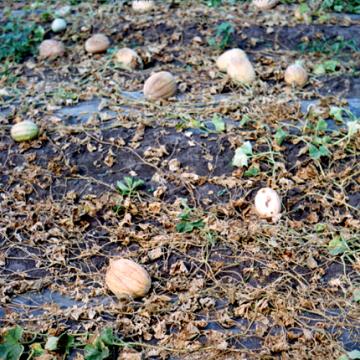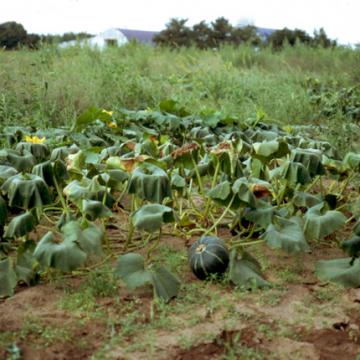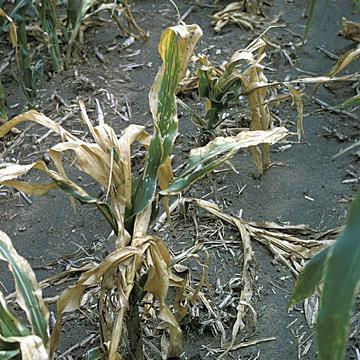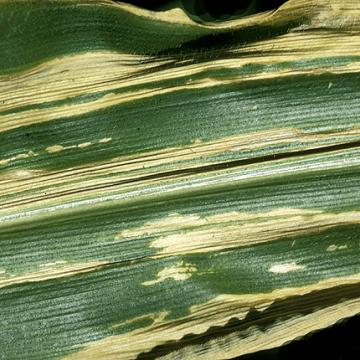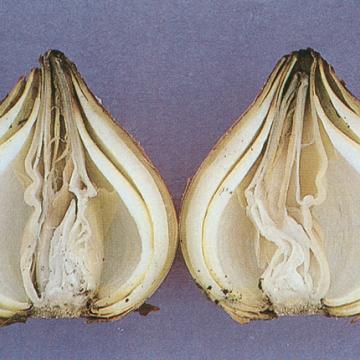DISEASE: Bacterial wilt
HOST: Cantaloupe
Cantaloupe field with severe destruction from bacterial wilt (left), less on right.
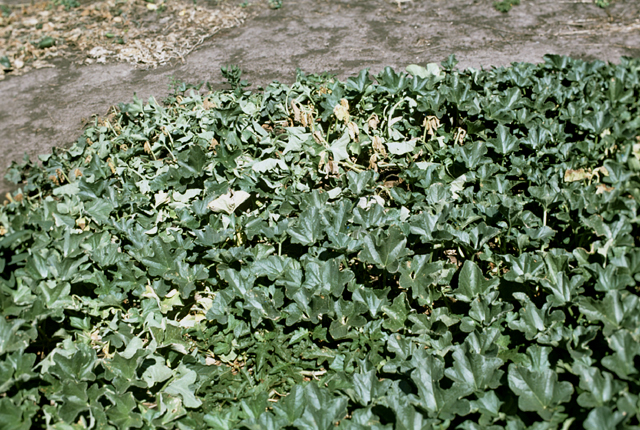
Bacterial wilt | Cantaloupe
DISEASE: Bacterial wilt
HOST: Cantaloupe (Cucumis melo var. cantalupensis)
PATHOGEN: Erwinia tracheiphila
SOURCE: L. Claflin
DISEASE: Bacterial wilt
HOST: Muskmelon
Severely diseased plants as noted by dying runners.
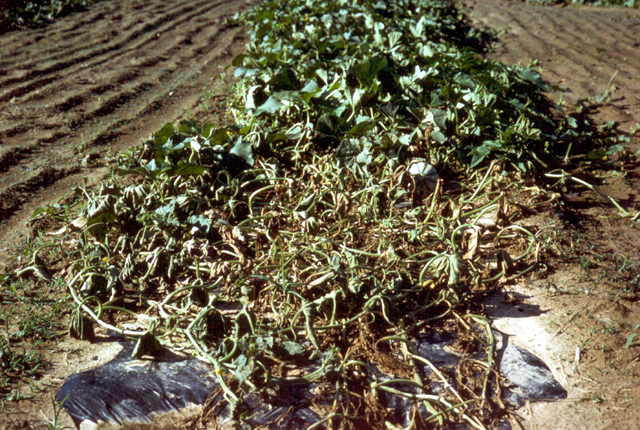
Bacterial wilt | Muskmelon
DISEASE: Bacterial wilt
HOST: Muskmelon (Cucumis melo)
PATHOGEN: Erwinia tracheiphila
SOURCE: M. Shurtleff
DISEASE: Bacterial wilt
HOST: Muskmelon
Wilt-devastated muskmelon field.
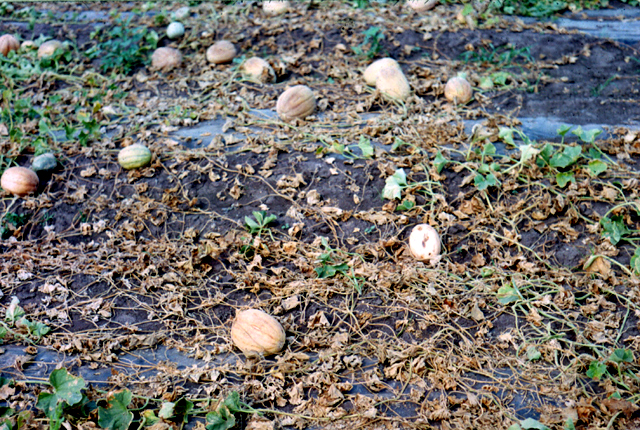
Bacterial wilt | Muskmelon
DISEASE: Bacterial wilt
HOST: Muskmelon (Cucumis melo)
PATHOGEN: Erwinia tracheiphila
SOURCE: M. Shurtleff
DISEASE: Bacterial wilt
HOST: Squash
Field with severe symptoms of wilt. Foliage often is chlorotic and leaf margins may be chlorotic and necrotic before plant death. Bacterial ooze may be seen streaming from the xylem when infected stems are cut.
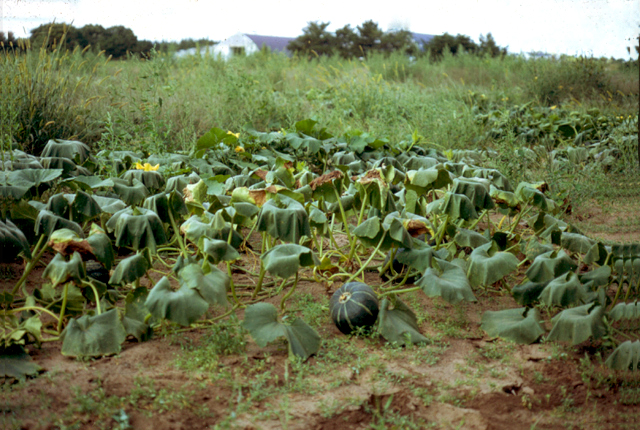
Bacterial wilt | Squash
DISEASE: Bacterial wilt
HOST: Squash (Cucurbita maxima)
PATHOGEN: Erwinia tracheiphila
SOURCE: B. Jacobsen, M. Shurtleff
DISEASE: Goss's bacterial wilt and blight
HOST: Corn (Maize)
Wilted, dying plants. Leaves have gray to light yellow stripes and irregular margins that follow leaf veins. Systemically infected plants usually have orange vascular bundles.
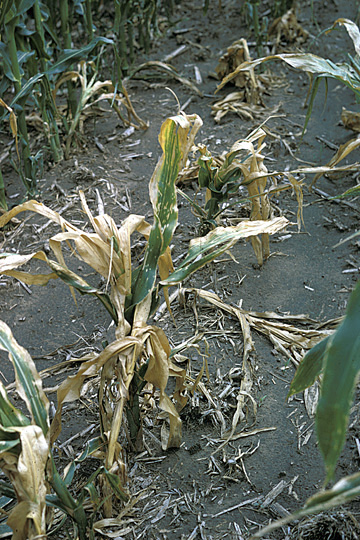
Goss's bacterial wilt and blight | Corn (Maize)
DISEASE: Goss's bacterial wilt and blight
HOST: Corn (Maize) (Zea mays)
PATHOGEN: Clavibacter michiganensis subsp. nebraskensis
PATHOGEN SYNONYM: Corynebacterium nebraskense
SOURCE: A. Vidaver
DISEASE: Goss's bacterial wilt and blight
HOST: Corn (Maize)
The disease causes necrotic leaf lesions, which typically have dark flecks (freckles) within the lesions (not seen here).
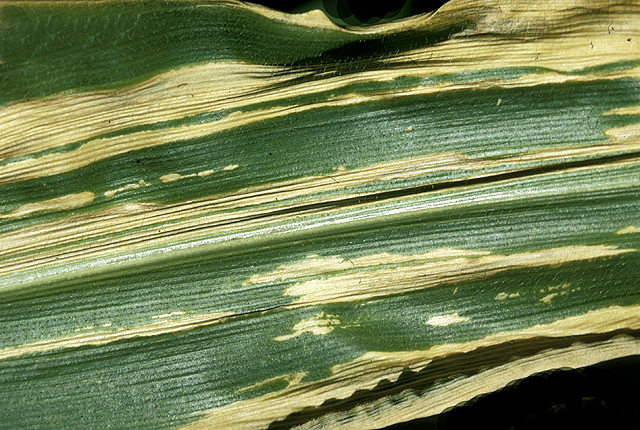
Goss's bacterial wilt and blight | Corn (Maize)
DISEASE: Goss's bacterial wilt and blight
HOST: Corn (Maize) (Zea mays)
PATHOGEN: Clavibacter michiganensis subsp. nebraskensis
PATHOGEN SYNONYM: Corynebacterium nebraskense
SOURCE: A. Vidaver
DISEASE: Slippery skin
HOST: Onion
Rot progresses from the top of infected scales and eventually internal tissues rot. In early stages, the only external symptoms may be softening of the neck.
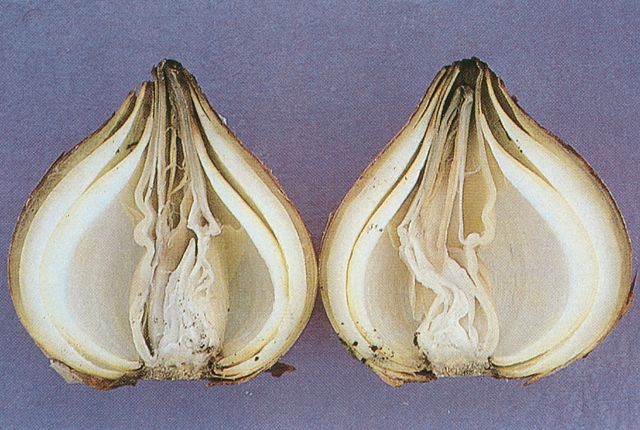
Slippery skin | Onion
DISEASE: Slippery skin
HOST: Onion (Allium cepa)
PATHOGEN: Burkholderia gladioli pv. alliicola
PATHOGEN SYNONYM: Pseudomonas gladioli pv. alliicola
SOURCE: H. Schwartz


